Our fathers to the house of God,
As yet a building rude,
Bore offerings from the flowery sod,
And fragrant rushes strewed.May we, their children, ne’er forget
The pious lesson given,
But honour still, together met,
The Lord of earth and heaven.Sing we the great Creator’s praise,
Who sends us sun and showers,
To cheer our hearts with fruitful days,
And deck our world with flowers.These of the great Redeemer’s grace
Bright emblems here are seen!
He makes to smile the desert place
With flowers and rushes green!“The Rush-Bearing Hymn,” composed by Rev. Owen Lloyd (curate of Ambleside; d. ca. 1840)
The dalesman are astir betimes in summer,
When dewy fields, knee-deep with grass and flowers,
Await the cutting. Columns of blue smoke
Rise from the village; in a neighboring mead,
That skirts the mere, a mower whets his scythe,
And echo blows her silver horn on high
From the hoar summit of a channelled cliff;
The milkmaid sings a love song as she goes
Down the green lane, festooned with eglantine,
To milk her cows, that low at her approach;
And children are come forth to greet the morn
With the bright welcome of their rosy smiles.But there is stir unwonted, for to-day
The valley keeps an ancient festival;
And by the sun has clomb the morning sky
Above the purple ridges of the east
All toil is over. Here and there are seen
Gay groups of country folk in Sunday suit,
With mirth and joyance winding through the vale,
Down mountain passes from the neighboring dales,
And by the gleaming margin of the lake,
And some in boats with banners on its breast.Rev. James Dixon (1788-1871), excerpt from “The Rush-Bearing”
We’ve chatted about the ancient celebration of rushbearing over the past month+, but it brings up the question: is this tradition, in our own various life situations, a museum piece…a historical curiosity? Is it a nostalgic vision that we sigh for? Or can it be something that folds meaning into our lives, here and now?
This is how I like to approach all of the historic traditions woven throughout the liturgical calendar. I know myself well enough to be aware that my fascination with history can easily turn into “collecting” - collecting information, interesting tidbits to admire.
And gathering information is all well and good, but the calendar begs for more - it asks us to take the (sometimes broken) continuity of tradition and invite it into our own lives in a way that informs our faith journeys. It’s like a seasonal catechism, one that can form us as we journey through the mystery of Christ through the calendar’s remembrances and celebrations.
As I wrote previously, the tradition of rushbearing persisted even after it was a necessity - it continued, or in some cases was revived, even after flooring had been installed in churches. It still continues in a number of towns even today.1
For those of us who don’t live anywhere near the remaining rushbearing festivals, how can this regional, ancient tradition inform our own lives?
The word “community” gets thrown around a lot these days - with all the connectivity we have, we’re often finding ourselves bereft of the real local community that once knit households & neighborhoods together. So, we find ourselves craving community - longing for shared ritual and a sense of truly knowing and being known, with all our imperfections, by those in our neck of the woods. That’s hard work, though (especially with the much easier “salve” of internet connection often trying to fill in the gap), and we’ve often forgotten what it really feels like to live in a true, honest-to-goodness parish.2
Translated into our modern lives, I think rushbearing can exist in so many forms - but its crux, to me, seems to be caring for our community’s physical, spiritual, & environmental needs, looking for the holy in the seemingly mundane, and acknowledging the fleeting way of our grass-like lives.
Here are a few of the rushbearing celebrations we’ve enjoyed this summer…
Rushbearing on the farm
On the farm, our cattle herd is the hub of our land’s fertility…in the spring and summer months, we rotate the herd through pasture and hay some of the fields. In the winter months, the cattle move back into the barn, where we use the summer hay for bedding and haylage for feeding them (we live in a flood plain, so winters are far too wet and unpredictable for them to stay out on the grass, not to mention that the grass doesn’t grow much in the winter). We compost their manure & straw bedding, and that’s what we spread on our fields to nurture the coming season’s veggies.
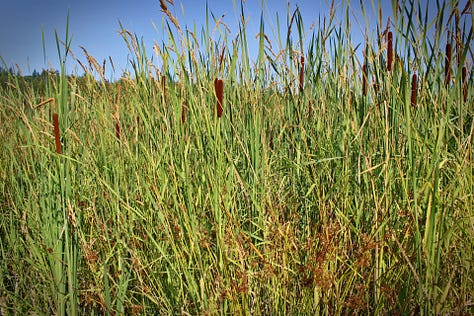


At the edge of one of our hay fields is a lower elevation where rushes thrive - we found both bulrush as well as Juncus effusus, which was one of the commonly used species for rushbearing (and a favorite for making rushlights)!
Even though we’re haying with modern tractors and implements, I’m always struck by the continuity between what we do and what farmers of hundreds - or even a thousand - years ago were doing. The tools have changed, but at least at our latitude, July & August are still prime hay season, and the rushes are glorious this time of year, too.
Rushbearing Cross
A traditional part of rushbearing ceremonies in Warcop, Cumbria has been the cross-shaped bearings secured with red ribbon - this was a quick & easy creation for our kiddos and makes for such a delightful summer door hanging.
To make your rush cross, gather two bundles of rushes & tie the ends of each bundle with red ribbon. Insert one bundle through the center of the other and wrap the middle with red ribbon - there’s no right or wrong way to do it! Add some roadside flowers or cut flowers from your garden to decorate it even more.


Gingerbread
One of the classic treats enjoyed after rushbearing festivals was gingerbread. You can make your own, but if you’re interested in trying the coveted recipe from rushbearing regions, Sarah Nelson’s Grasmere Gingerbread ships internationally and has been making amazing gingerbread since the 1850s:
“Grasmere Gingerbread was invented in 1854 by Victorian creator cook Sarah Nelson who mixed and baked her spicy-sweet chewy concoction inside her neat Church Cottage home – now The Grasmere Gingerbread Shop – and sold it to villagers and visitors from a table top on a tree stump outside her front door.
“Within a few years its reputation had reached nearly every corner of the country and with the advent of the steam railways tourists flocked to Grasmere to buy her succulent invention.” (History)
Sarah Nelson’s Gingerbread supplies this classic festival treat to the rushbearers at St. Oswald’s Church in Grasmere! From their web site’s entry on rushbearing:
“This ancient custom inside St Oswald’s Church, next to The Grasmere Gingerbread Shop, dates back to the days before church floors were flagged.
“Parishioners would lay down rushes to purify the air and protect against the cold. Today, the children of Grasmere are rewarded with a piece of Grasmere ‘Rushbearing’ Gingerbread if they are lucky enough to carry one of the rushes!
“‘My parents – who ran the shop for 40 years – used to make the special Rushbearing Gingerbread and we’ve resumed the tradition to help the local church and keep an important custom alive,’ said Joanne Hunter, a partner in Grasmere Gingerbread.”
We were fortunate to treat ourselves with a taste of the Lake District by ordering a bit of gingerbread, and it was absolutely wonderful. We ordered a few packets so that we could share with friends (some of whom were so smitten with the flavor that they went on to order more!)
Putting it all together
Historic rushbearing was flexible…festivals moved dates for weather reasons, and folks used everything from rushes to grass to hay. In our varied life situations, maybe rushbearing involves gathering Southwest desert grasses…flowers & weeds growing in the sidewalk cracks in a bustling city…buying a bouquet from a local florist or grocery. And/or perhaps it’s a nudge to bring a carton of food to our food bank, volunteer to clean our church, drop off our bouquet of “rushes” (whatever form they may take) with some treats to our neighbors.
Since this custom isn’t exactly well-known, I’ve made a little rushbearing otter card for you with a hymn and a short blurb about the tradition!
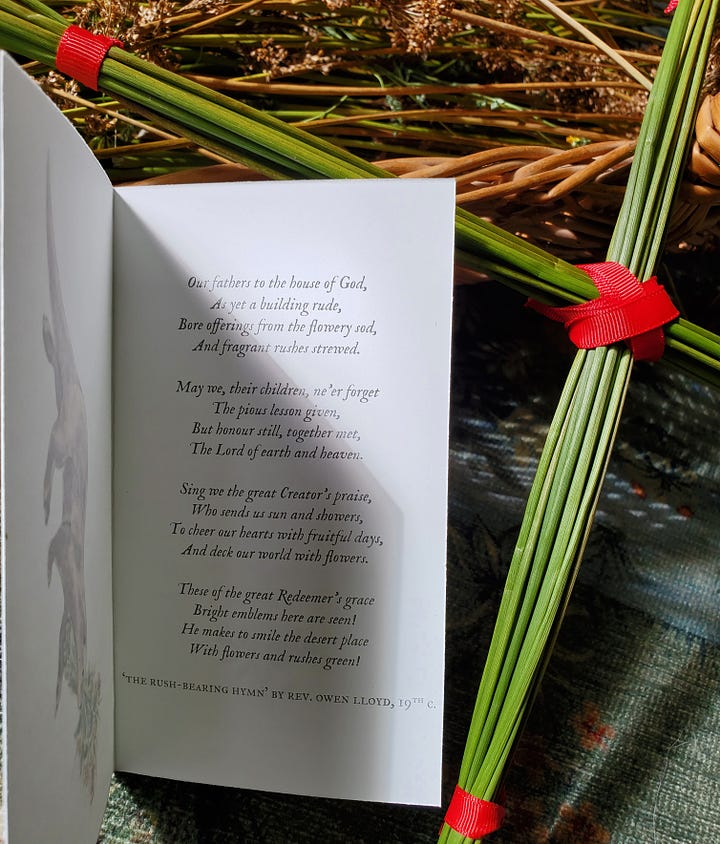

(For personal use only…please don’t re-sell or re-post. If you’d like to print for larger groups, please reach out to me!)
Thank you so much for joining me on the rushbearing journey this summer…if you find a way to fold this tradition into your busy life, I’d love to hear how you go about it!
Whatever form rushbearing takes for you, let’s welcome it as an invitation and a beckoning to stretch out of our comfort zones & into our communities in these fleeting lives we’ve been gifted.
I’ll leave you today, and close out this delightful dive into rushbearing, with some beautiful bulrush pages from Claude Paradin’s Devises heroïques (1557):
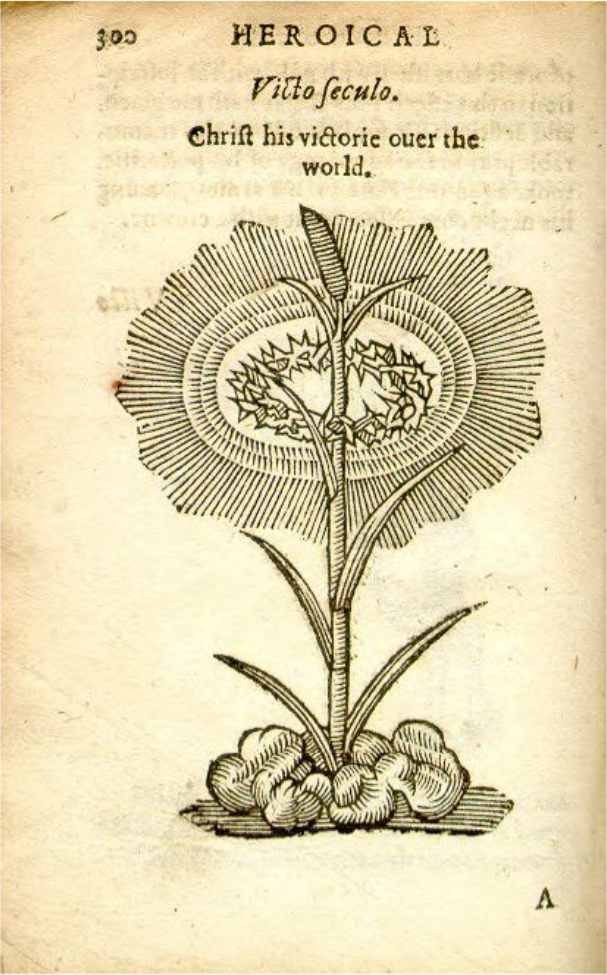

The common heirs we all are of the past,
The common bonds that bind us in the present,
The common hopes that with mild splendour light
The life, the death, the life again, for all.
Rev. James Dixon (1788-1871), excerpt from “The Rush-Bearing”
P.S… a little housekeeping
As I’ve been dipping my toes into the world of Substack, I’m still getting a sense of what my rhythms on here will look like; I’m so thankful to my wonderful paid subscribers with their graciousness as I figure out these patterns! Though I’m offering this summer’s final rushbearing post (along with its free printable) to all you lovely subscribers, some future posts like this will be written especially for paid subscribers.
I’m always so grateful for your support here, whatever form it takes! Paid subscriptions in particular help me to build my research library, support my art supplies fund, and help me to get closer toward the goal of publishing a book.
Just to name a few: https://www.visitcumbria.com/rushbearing-festivals/


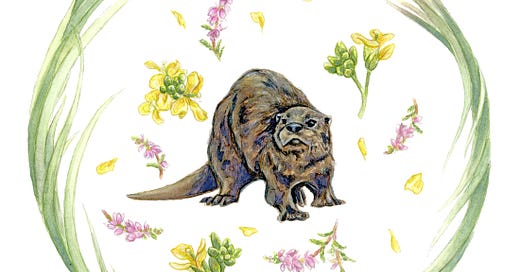





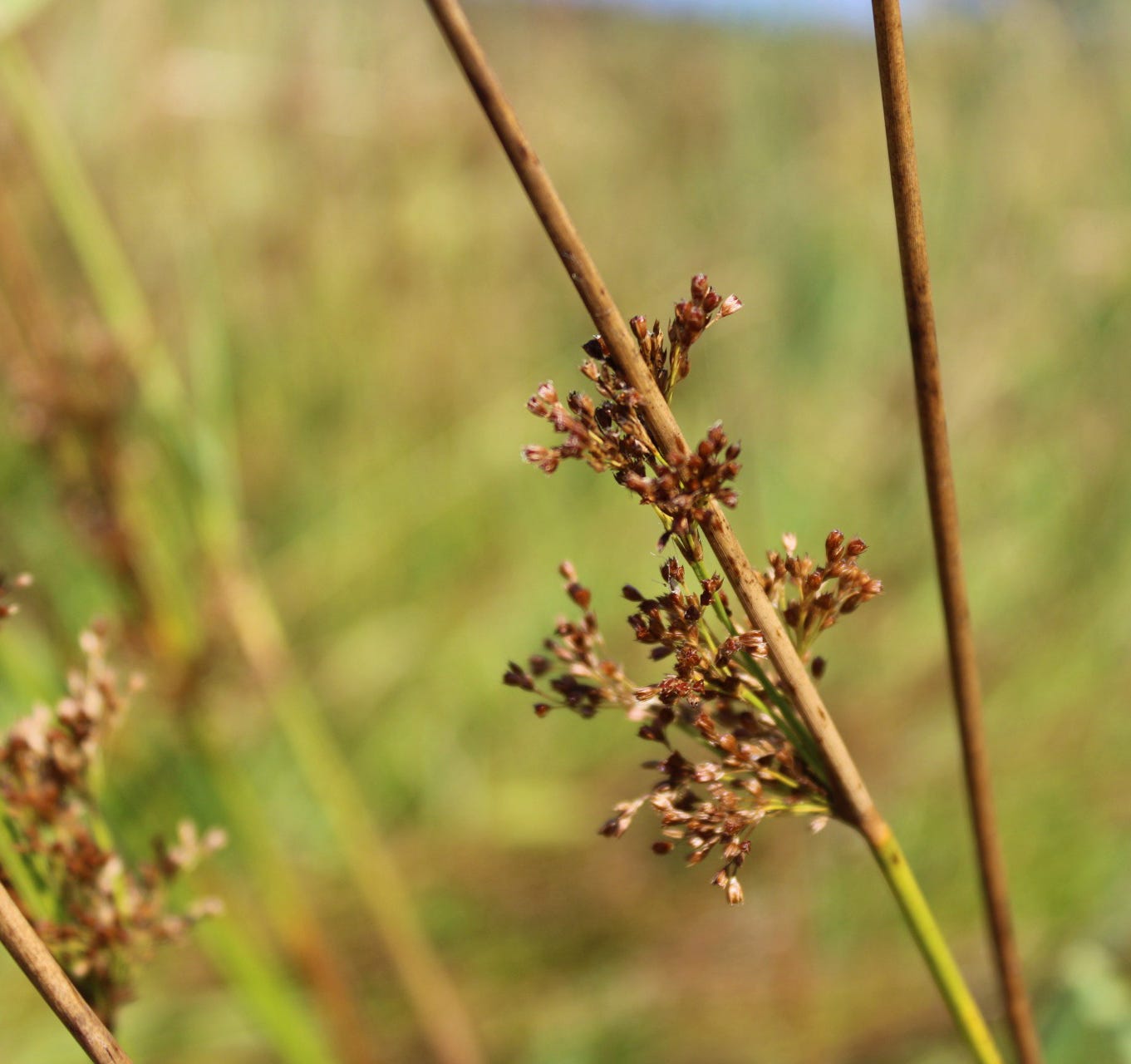



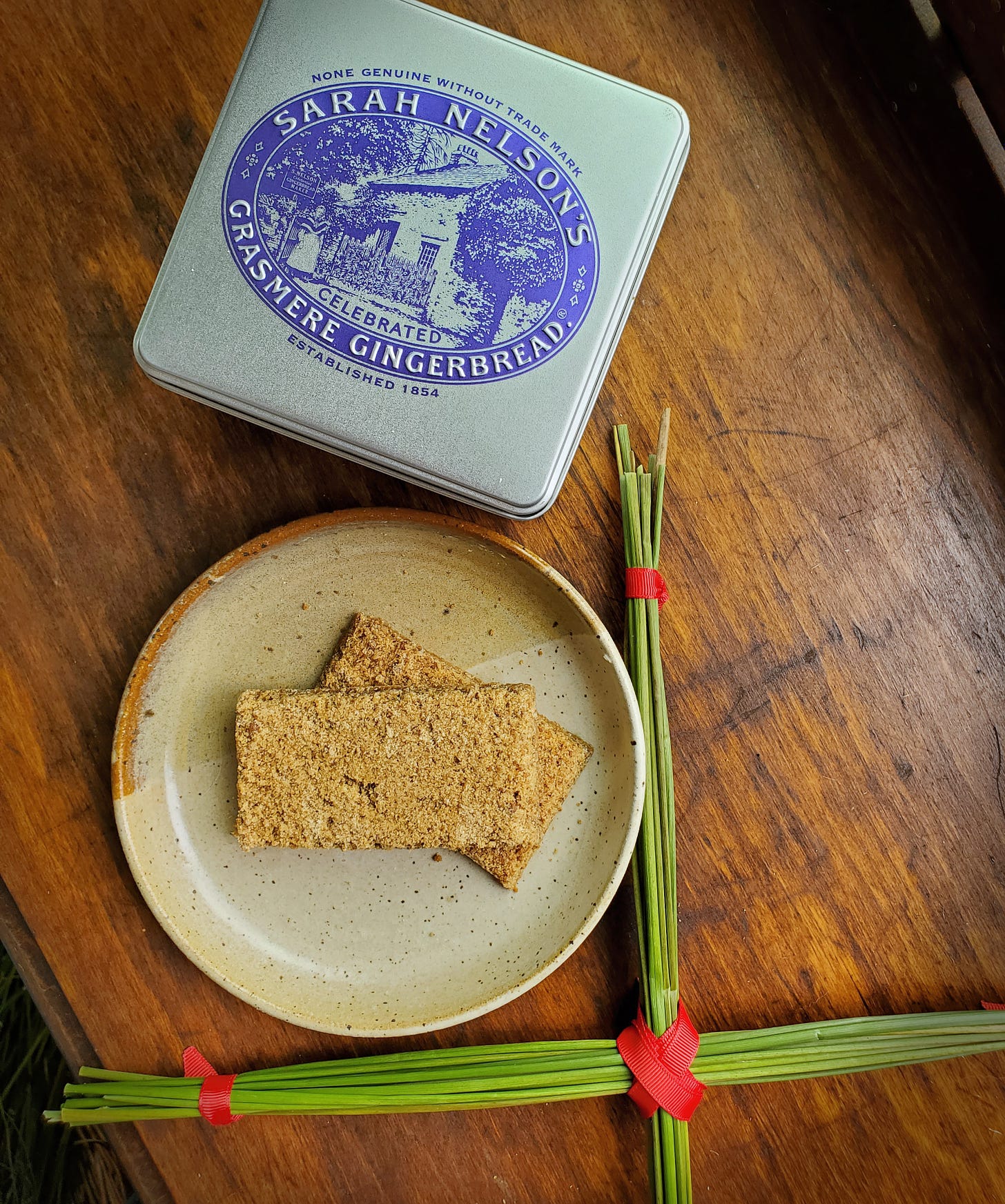


liking this tradition alot. Your photos are lovely.